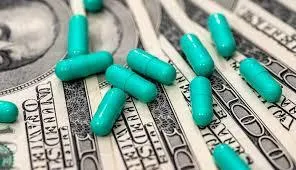Knowledge That Cares!
We believe education is a powerful form of care. Our blog offers trusted information, heartfelt guidance, and ongoing support to help patients and families feel informed, empowered, and never alone on their path through cancer.

Executive Order On Prescription Drug Prices
Executive Order on Drug Price Reductions:
Bold Promise or Political Theater?
On May 12, 2025, President Donald Trump signed a sweeping executive order aimed at slashing U.S. prescription drug prices by up to 80%. At the heart of the plan is a revival of the "most favored nation" (MFN) pricing model, which seeks to align U.S. drug costs with the lowest prices paid in other developed countries.
What the Executive Order Proposes
The order directs the Department of Health and Human Services (HHS) to communicate new price targets to pharmaceutical manufacturers. If companies fail to comply, the administration threatens regulatory actions, including the potential revocation of drug approvals and the expansion of drug importation programs.
Additionally, the order targets "middlemen" in the pharmaceutical supply chain, such as pharmacy benefit managers (PBMs). By promoting direct cash payments to drugmakers and reducing reliance on insurers and PBMs, the administration aims to increase price transparency and reduce costs for consumers.
Industry and Market Reactions
The pharmaceutical industry has expressed cautious support for the initiative, particularly the focus on foreign contributions to high drug prices. However, concerns remain about the potential impact on innovation and patient care.
Market reactions have been mixed. Shares of major pharmaceutical companies like Pfizer and Merck rose following the announcement, while stocks of PBM-associated firms such as Cigna and CVS Health experienced declines, reflecting investor uncertainty about the order's implications.
Skepticism and Legal Challenges
Despite the bold claims, analysts and healthcare experts are skeptical about the order's immediate impact. The lack of legislative authority and specific enforcement mechanisms raises questions about its effectiveness. Similar efforts during Trump's previous term faced legal hurdles and were ultimately blocked by courts.
Furthermore, the order's reliance on voluntary compliance from pharmaceutical companies and the potential for legal opposition from powerful industry stakeholders suggest that significant challenges lie ahead.
Comparison with the Inflation Reduction Act
The executive order stands in contrast to the Inflation Reduction Act (IRA) signed by President Joe Biden in 2022, which granted Medicare the authority to negotiate prices for select prescription drugs. The IRA's approach has been more structured, with specific provisions and timelines for implementation, and has already led to negotiations for several high-cost medications.
Conclusion
While the executive order represents a bold attempt to address the long-standing issue of high prescription drug prices in the U.S., its success depends on overcoming significant legal and practical challenges. The coming months will reveal whether this initiative can deliver tangible benefits to American consumers or if it will join the ranks of previous, unfulfilled promises in the realm of drug pricing reform.
For those interested in the full text of the executive order, you can read it here: Delivering Most-Favored-Nation Prescription Drug Pricing to American Patients.
Note: This blog post is based on information available as of May 13, 2025. For the most current developments, please refer to official government releases and reputable news sources.
Success Stories



Let's Talk About How We can Support Your Journey..
Fill out the info below
Schedule your video call
Let's do this journey together!
I Want To Learn More!
Please complete the form below and schedule a video call with us today!
Contact Info:
Address:
6508 Jade Tree Ln, Raleigh, NC 27615
Get In Touch
Staffed Hours
Appointment Only
Phone Number:
760-390-2226
Socials:

